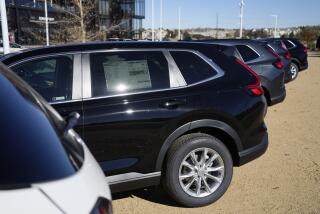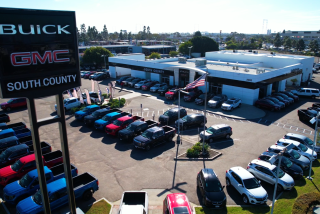A Large Quota of Fraud
- Share via
By next March 31 Japan’s auto companies are likely to have easily sold the 2.3 million cars that they had fixed as their annual maximum to the American market, and with President Reagan committed not to seek an extension of import quotas they will be looking to greater sales in the year ahead. That doesn’t portend a huge rise in Japanese imports, since the auto makers almost certainly will agree among themselves on restraints in an effort to avoid igniting a protectionist reaction. But the Japanese will probably reach for a bigger market share, and that has people in the U.S. auto industry worried. Signs of that worry have emerged even at General Motors, which has traditionally opposed import quotas.
A few days ago GM Chairman Roger B. Smith suggested in an interview that quotas might not be such a bad idea after all. A day later, perhaps after someone recalled that GM even now brings in 150,000 Japanese-made cars to sell under its Chevrolet marque, the company issued a statement saying it hadn’t changed its position after all. Meanwhile the United Auto Workers union, which led the successful charge for import quotas five years ago, was hailing GM’s apparent switch. The UAW’s position is understandable. It has seen its membership decline as U.S. auto production has fallen and as cost-cutting automation has increasingly taken hold at auto plants.
Even if Japanese imports don’t rise next year, U.S. auto makers face increasing competition at a time when their sales prospects may well have been undercut by the incentives they offered to clear out 1986 models. Sales of South Korea’s Hyundai, which have already exceeded expectations, are likely to continue growing, and soon other Korean autos will join the import stream. Brazil, among others, is also preparing to enter the U.S. car market.
None of this was publicly foreseen when lobbyists for import quotas on Japanese cars got their way in 1981. The contention then was that U.S. car makers simply needed some breathing room so that they could tool up to better meet foreign competition. The bulk of that competition was and remains in smaller cars. Yet, after five years of quotas, only Chrysler has succeeded in producing well-received smaller models. That’s a major reason why Ford and GM can’t meet federal fuel economy standards, and have been excused from doing so by a sympathetic Reagan Administration. The two companies blame their woes on a fickle public, which has shown a revived taste for their larger, poorer-mileage and, happily for them, more profitable cars. But the continued high sales of fuel-efficient foreign cars is proof that when quality and price are right, the public will eagerly buy.
A new effort to reimpose auto import quotas is likely next year. The bleak record of five years of anti-competitive quotas makes it safe to predict what a successful effort would mean. Consumers would again see a punishing inflation in car prices. They would again find their freedom of choice severely reduced. And once again, millions of potential buyers would find themselves priced out of the new car market. With quotas, the American car makers would undoubtedly improve their market shares and maybe even their profits. They would do so, however, only at the cost of fewer cars sold, which ultimately means more jobs lost. By every measurement, quotas have proven to be a continuing and costly fraud. Resurrecting them would only prolong the crime wave.






